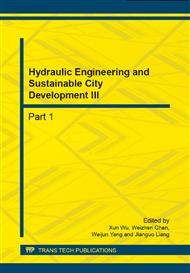p.267
p.271
p.275
p.279
p.283
p.288
p.300
p.304
p.309
Hydrocomp Design and Prediction of Hydrodynamic Performance of Propeller
Abstract:
With the continuous development of large-scale, high-speed ship, considering economy and security of the ship, propeller design and performance research are of importance. In this paper, the best propeller is obtained by using the propeller design software HydroComp PropExpert and HydroComp PropCAD. Propeller geometry model is generated by Solidworks. Applying computational fluid dynamics method (CFD), we can take numerical simulation for the flow around the propeller. Finally, with the help of the software ANSYS, hydrodynamic performance of the design propeller can be forecasted. The results from the calculation and analysis can provide some reference for engineering practical problems and theoretical study.
Info:
Periodical:
Pages:
283-287
Citation:
Online since:
September 2014
Authors:
Keywords:
Price:
Сopyright:
© 2014 Trans Tech Publications Ltd. All Rights Reserved
Share:
Citation:


